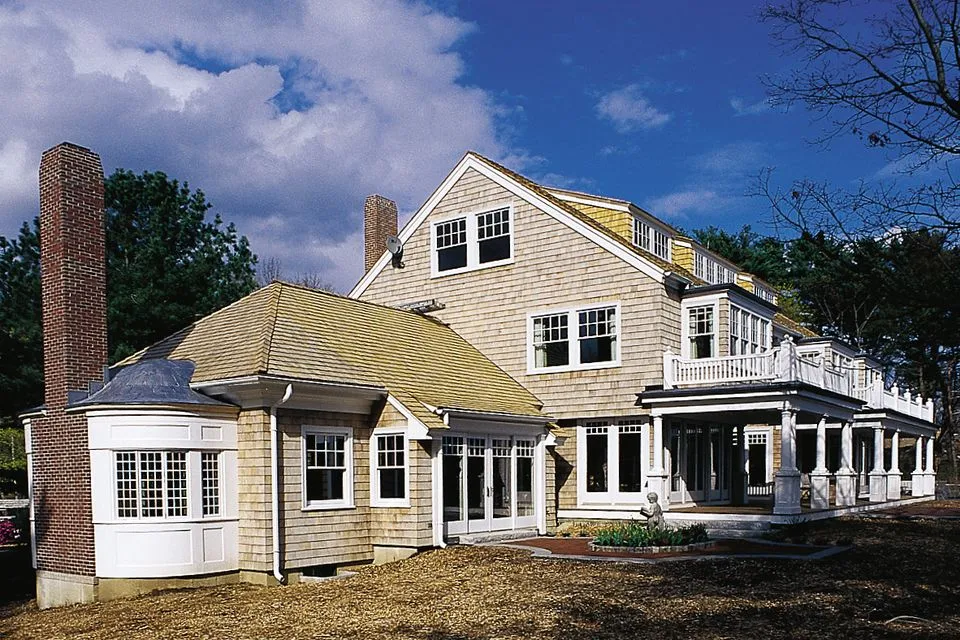
Selecting the right shingle to re-side a once magnificent Shingle-style house is every bit as important a decision as it sounds. Traditionally, red cedar was the choice for grand houses like the McCues’ Shingle in Manchester. Tight-grained and virtually saturated with tannic acid — a natural preservative, red cedar is a tough, long-lasting material. It tends to weather to a dark, rich look. It was with this material that the original house on this site was clad in 1883. Over time, however, the seaside climate takes a harsher toll on the appearance of red cedar, causing it to turn black and blotchy. So in the 1979 renovation, the house was re-sided using white cedar. And while it does weather to a pleasing, uniform silver, with less tannin and wider grain, white cedar is not as durable or long-lived as its red cousin.
Although they liked the silver hue of their white-cedar house, undertaking a complete architectural overhaul of their home also presented the McCues with the opportunity to re-side using the more historically correct red cedar. In the end, modern shingle-treatment technologies have allowed them to have the benefits of both.
Because of the historical approach to the restoration, most of the newer solutions in siding materials were out from the beginning. For instance, had longevity been the only factor, a material such as fiber-cement siding stained with water-based coating would have been a perfectly viable option. But fiber cement and wood shingles weather very differently. There would be little natural weathering effect with fiber cement, and the appearance over time would not have been appropriate for a traditional Shingle-style house.
Historical accuracy, as well as the McCues’ own aesthetic preference, dictated that the new siding should be cedar. But would it be white or red? Even though this large Manchester Shingle has worn it for the past 20 years, white cedar is traditionally a material more typical of Nantucket-style cottages. Red cedar, coming mainly from the Pacific Northwest, has long been considered the more high-end shingle material. More expensive than white cedar, hardy red — often dipped in creosote to combat weather and decay — was a premium building material that accentuated the prestigious character of grand New England Shingle-style homes.
What the McCues decided was to go with red cedar shingles that have been treated with bleaching oil. Regardless of color, cedar shingles do require initial treatment and some maintenance. Proper shingle coating and protecting stains are critical to the longevity and desired appearance of a house’s exterior. Basically composed of linseed oil and bleach crystals, the bleaching oil not only will protect the McCues’ shingles against decay, fungus and other coastal contamination, but also impart a much different visual effect than creosote. Contact with the elements will activate the bleach crystals in the oil, causing the red cedar shingles over a few months’ time to take on a natural, light gray color similar to the weathered look of white cedar.
Mildecide, another key agent in the bleaching oil, works against the often misunderstood blackening effect many red-cedar-shingled buildings undergo when left untreated, especially by the sea. This blackening is a combination of mildew infestation and natural extractives in the wood. But treated with bleaching oil, the red cedar shingles can weather naturally and evenly while enjoying protection against discoloring mildew.
To keep their shingles in good working order, the McCues will need to re-coat them with bleaching oil every four to seven years, depending on the severity of the seaside weather. But in return, their house will have its historically proper shingles once again, as well as a beautiful, naturally weathered appearance that will last for many years to come.
Brett Reily is a representative of Samuel Cabot, Inc., who supplied wood-care products for the Manchester project.

